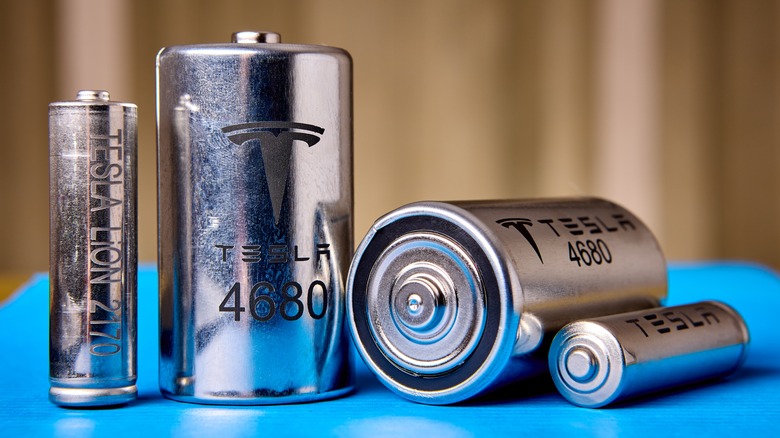Why The Long-Awaited Tesla Semi Could Be Doomed To Fail
The Tesla Semi shows a lot of potential as an EV, but can it actually deliver on its claims of becoming the future of trucking? So far, there are already a lot of promising details revealed about the Tesla Semi. For starters, it accelerates extremely fast for a truck, and may very well be the longest-range EV ever conceived once it finally arrives. Certain Tesla Semi standard features like autopilot can also make long-haul trips quite effortless as well. Tesla's super truck runs on three independent electric motors on its rear axles, allowing it to go from 0 to 60 mph in 20 seconds while carrying a full load of 80,000 pounds.
However, the trucking business isn't just about what a semi truck can do ... More importantly, it's also about how long it can stay operational. The Tesla Semi specs sheet reveals it's capable of a 300- to 500-mile range on a single charge. Recharging a Tesla Semi to 70% of its total capacity is said to take only 30 minutes via fast charging. Telsa claims topping off its electric semi truck is 2.5 times cheaper than its diesel alternative, which is said to save up to $200,000 in fuel costs within the first three years of ownership. While this all sounds good on paper, the average trucking expenses of conventional semi trucks might not paint such a flattering picture of the Tesla Semi.
Is the Tesla Semi a practical alternative or a maintenance nightmare?
So, how well does the Tesla Semi fare against its diesel-chugging counterparts? According to trucking financing service Bobtail, truckers usually cover around 400 to 500 miles per shift on average, or about 100,000 per year, with conventional semi trucks having engines capable of lasting 700,000 to even a million miles. When regularly maintained, these trucks can reportedly continue operating after two decades. As for maintenance, the average semi truck repair costs go for about $15,000 per year, according to trucking company International Used Truck Centers and Truckers Report. Sure, the Tesla Semi might have fewer moving parts that need constant repairing, but simply being an EV can be detrimental to its longevity.
Expensive battery replacement is a major factor that's been dissuading potential Tesla buyers, as replacing even a base Tesla Model 3 battery can reach nearly $16,000. The thing is, the Tesla Semi makes use of three electric motors (via Tesla). Not only is it bigger than a Model 3, but it will also be subjected to more abuse as well when used for hauling cargo, possibly wearing down those batteries quicker than usual. Its impracticality becomes apparent when compared to the more durable, faster-refueling diesel engine alternative. Only time will tell if the Tesla Semi's improved 4680 cells make it a more viable trucking solution, but until then, its actual reliability in real-world use cases remains to be seen.

